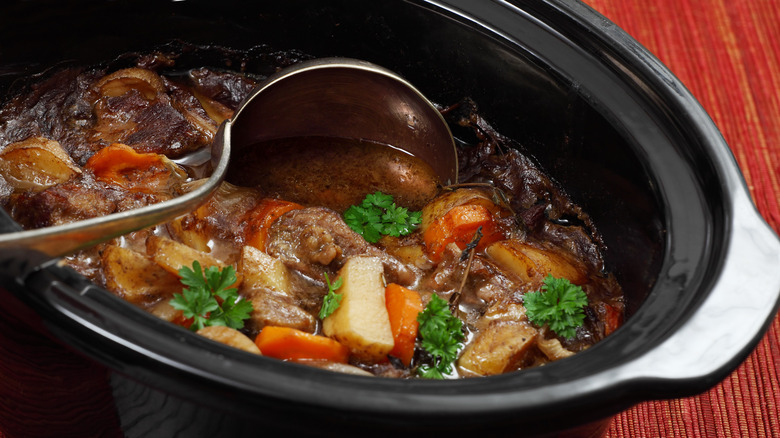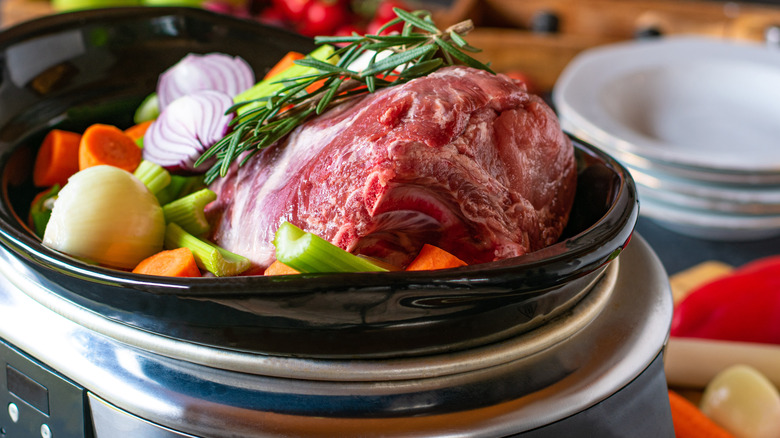Why You Should Be Using A Slow Cooker To Braise Meat
If there's a more cold weather-appropriate dish than succulent braised meat, we'd be hard-pressed to think of one. Typically consisting of hearty cuts such as lamb shank, pork shoulder, and short ribs, braises feature a tender, falling-apart piece of meat that simmers in liquid that reduces over the extended cook time, according to MasterClass. Rich in meaty flavor and sporting a thick pan sauce that goes wonderfully with rice, pasta, or bread, braises are just the comfort food ticket during the long, cold nights of autumn and winter.
The outlet notes that braising is a two-step cooking process that begins with pan-searing the cut of meat until well-browned, then adding a flavorful cooking liquid such as stock, wine, or beer. Over the course of several hours, the meat will become extremely tender — thanks to the slow breakdown of the collagen in the meat. And while Dutch ovens or heavy pots are common vessels for cooking a braise, a slow cooker is also a great — and less hands-on — tool for the job.
It takes collagen several hours to break down
If you've ever braised a large cut of meat such as beef brisket, then you know the cooking time is an extended one, with the meat becoming tender over the course of several hours. As explained by The Spruce Eats, what's happening in your pot is that the collagen in the meat, a natural protein that is tough while the meat is raw, is slowly breaking down over time, dissolving into soft, jiggly gelatin. That's why braising is such an excellent cooking method for tough cuts of meat because the collagen dissolves in the slow, constant heat, they're left tender enough to shred with a fork. As the outlet explains, this process takes time.
First, the collagen in the meat has to reach 160 degrees Fahrenheit — between this temperature and 205 degrees Fahrenheit, the protein breaks down, lubricating the bundles of muscles inside the meat with rich gelatin. Since the temperature of the dish has to remain within this range, braising is an effective way to keep the temperature constant. But an even more hands-off approach would be to braise the meat in a slow cooker, whose set-it-and-forget-it capabilities maintain the braise in the correct temperature range as you go about your day — or even while you're sleeping, if you load up the Crock-Pot the night before (via Food52). So the next time you're braising some osso bucco or beef short ribs, outsource the hard work to your slow cooker.

